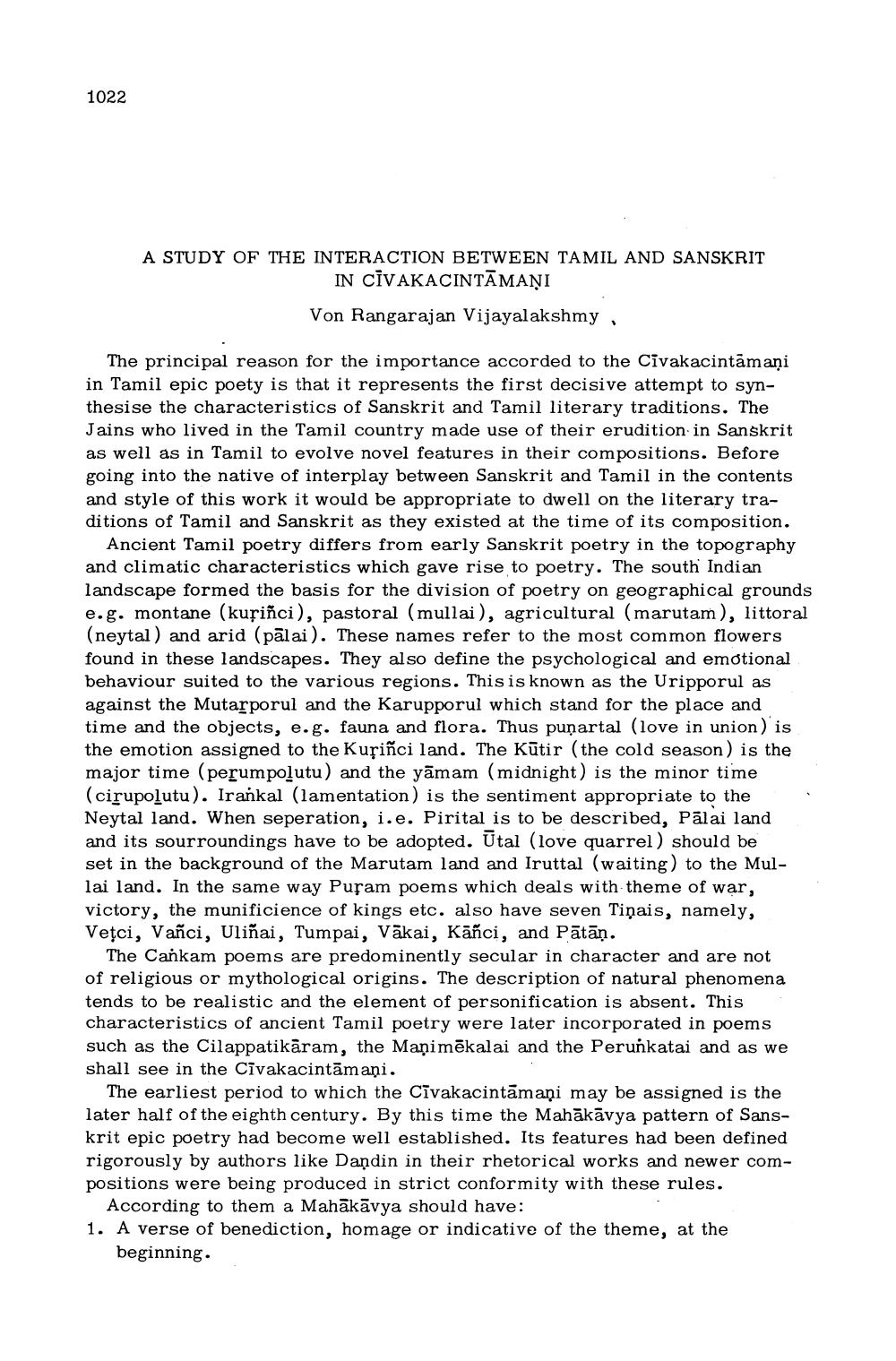________________ 1022 A STUDY OF THE INTERACTION BETWEEN TAMIL AND SANSKRIT IN CIVAKACINTAMANI Von Rangarajan Vijayalakshmy. The principal reason for the importance accorded to the Civakacintamani in Tamil epic poety is that it represents the first decisive attempt to synthesise the characteristics of Sanskrit and Tamil literary traditions. The Jains who lived in the Tamil country made use of their erudition in Sanskrit as well as in Tamil to evolve novel features in their compositions. Before going into the native of interplay between Sanskrit and Tamil in the contents and style of this work it would be appropriate to dwell on the literary traditions of Tamil and Sanskrit as they existed at the time of its composition. Ancient Tamil poetry differs from early Sanskrit poetry in the topography and climatic characteristics which gave rise to poetry. The south Indian landscape formed the basis for the division of poetry on geog e.g. montane (kusinci), pastoral (mullai), agricultural (marutam), littoral (neytal) and arid (palai). These names refer to the most common flowers found in these landscapes. They also define the psychological and emotional behaviour suited to the various regions. This is known as the Uripporul as against the Mutarporul and the Karupporul which stand for the place and time and the objects, e.g. fauna and flora. Thus punartal (love in union) is the emotion assigned to the Kusinci land. The Kutir (the cold season) is the major time (perumpolutu) and the yamam (midnight) is the minor time (cirupolutu). Irankal (lamentation) is the sentiment appropriate to the Neytal land. When seperation, i.e. Pirital is to be described, Palai land and its sourroundings have to be adopted. Utal (love quarrel) should be set in the background of the Marutam land and Iruttal (waiting) to the Mullai land. In the same way Pufam poems which deals with theme of war, victory, the munificience of kings etc. also have seven Tinais, namely, Vetci, Vanci, Ulinai, Tumpai, Vakai, Kanci, and Patan. The Cankam poems are predominently secular in character and are not of religious or mythological origins. The description of natural phenomena tends to be realistic and the element of personification is absent. This characteristics of ancient Tamil poetry were later incorporated in poems such as the Cilappatikaram, the Manimekalai and the Perunkatai and as we shall see in the Civakacintam ani. The earliest period to which the Civakacintamani may be assigned is the later half of the eighth century. By this time the Mahakavya pattern of Sanskrit epic poetry had become well established. Its features had been defined rigorously by authors like Dandin in their rhetorical works and newer compositions were being produced in strict conformity with these rules. According to them a Mahakavya should have: 1. A verse of benediction, homage or indicative of the theme, at the beginning




